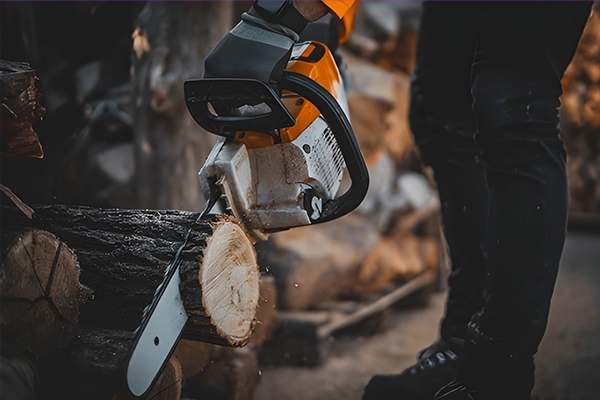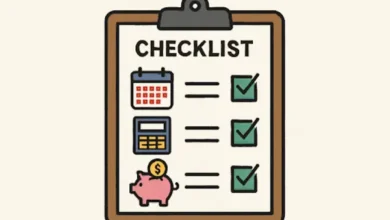5 Chainsaw Tips to Cut Smarter, Not Harder

Few outdoor tools are as powerful as a chainsaw.
From trimming thick branches to bucking firewood and felling trees, a chainsaw can turn hours of backbreaking manual labor into a few minutes of skilled sawing, as long as you know what you are doing.
The four pillars of effective chainsaw use are generally considered to be preparation, technique, skill, and focus.
This article will bring together five practical chainsaw tips to help you cut smarter, not harder.
- Plan Your Cuts
Chainsaws are super powerful tools, and once you commit to a cut, there is very little wiggle room to improvise.
Take a few minutes to think about what you are about to cut to improve the quality of your work and keep yourself safer during the cutting process. Start by surveying your work area, scanning the surroundings for hazards such as power lines, fences, and vehicles.
Lastly, marking your cuts can help, particularly when you are doing precision jobs, like prepping firewood. You can use chalk or spray paint to give you a visual guide.
- Chain Tension
Correct chain tension is one of the most notable aspects of chainsaw maintenance.
A poorly adjusted or loose chain risks derailing from the bar, damaging your equipment, and risking injuries during a landscape design project. If your chain is too tight, there will be added strain on the saw, reducing performance and shortening its lifespan.
The Goldilocks version is to aim for your chain to sit snugly against the bar but still move freely when pulled by a gloved hand.
Most chainsaws have a tensioning screw near the bar that allows for fine-tuning.
A properly tensioned chain cuts cleaner and with less kickback risk.
- Use A Chainsaw Sharpener
The difference between a chainsaw that glides through wood like a hot knife through butter and one that fights you every second of the job is usually a sharp chain.
Instead of waiting for your saw to struggle with even the simplest task, use a chainsaw sharpener to ensure smoother cuts, safer operation, and less strain on the tool.
The trick to sharpening is consistency. Don’t wait until your chain begs for mercy; touch it up after every tank of fuel or so, to keep the teeth sharp and extend the life of your saw.
- Take Breaks
Operating a chainsaw may look simple and straightforward, but it is actually one of the most physically and mentally demanding outdoor jobs you can take on.
The chainsaw itself is heavy, noisy, and vibrates constantly in your hands while on. The cutting process requires fierce concentration, strength, and balance. Fatigue can set in faster than you might expect.
Taking regular breaks keeps you safer and more effective.
- Clean Felling Notches
Before you can even think about cutting, thoroughly inspect the tree’s lean, surrounding obstacles, and the direction of the wind. After that, plan the tree’s fall path and your escape route.
Tree felling with a chainsaw is all about preparation and precision. The notch cut is your best friend for bringing down a tree safely.
Done properly, it gives you control over where the tree falls and prevents splitting. It is the guiding wedge you remove from the side of the tree facing the direction you want it to fall.
Final Notes
Respect your chainsaw by following these five tips, and it will soon become your go-to tool for every outdoor or garden project.




